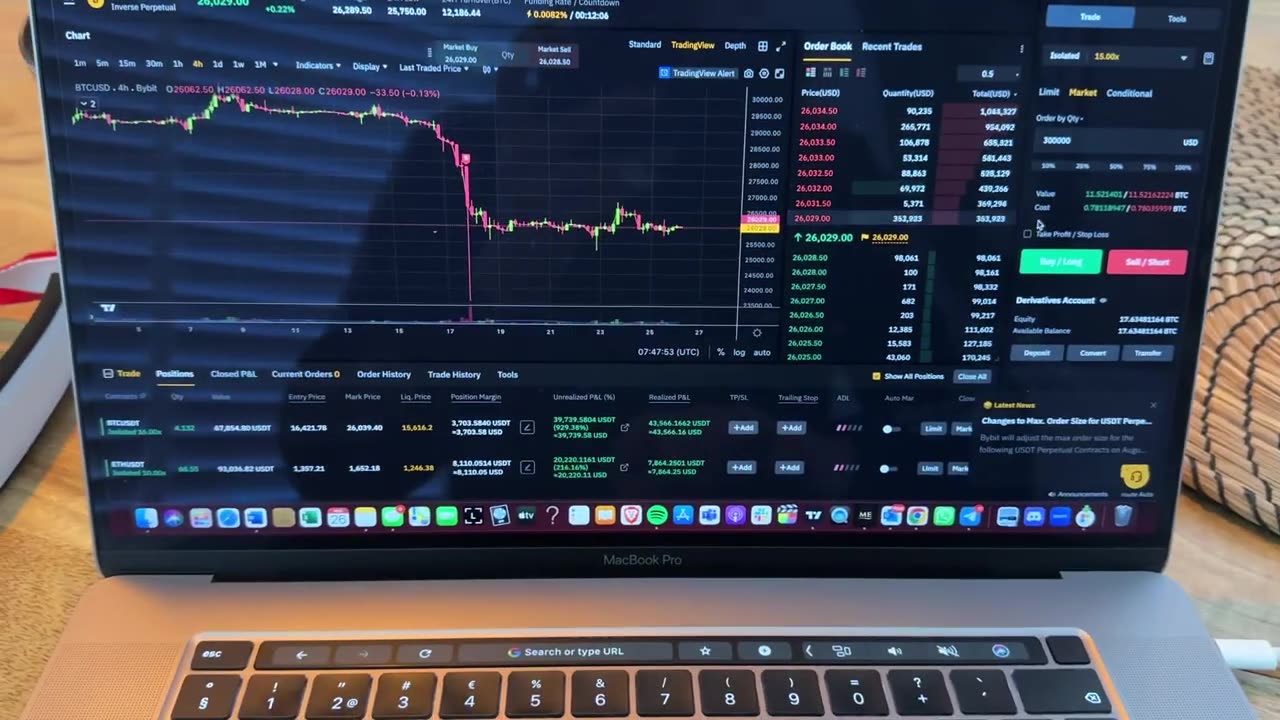Premium Only Content

HOW TO TRADE BITCOIN !!!!
Trading Bitcoin, like any other form of financial trading, involves a combination of knowledge, strategy, and risk management. Here's a step-by-step guide to help you get started:
Educate Yourself: Before you start trading Bitcoin, it's crucial to understand the basics of how cryptocurrencies work, what drives their value, and the dynamics of the market. Research online resources, articles, books, and video tutorials to build a strong foundation.
Understand the Risks: Cryptocurrency markets can be highly volatile and risky. Prices can fluctuate significantly in a short period, leading to substantial gains or losses. Be prepared to potentially lose the entire amount you invest.
Choose a Reliable Exchange: Select a reputable cryptocurrency exchange to buy, sell, and trade Bitcoin. Some popular exchanges include Coinbase, Binance, Kraken, and Bitfinex. Ensure that the exchange has strong security measures in place to protect your funds.
Create an Account: Sign up on the chosen exchange, complete the necessary identity verification procedures (KYC), and set up two-factor authentication (2FA) for added security.
Fund Your Account: Deposit funds into your exchange account using your preferred payment method, such as bank transfer, credit/debit card, or other cryptocurrencies.
Choose a Trading Strategy:
Day Trading: Involves making multiple trades within a single day to take advantage of short-term price movements.
Swing Trading: Involves holding positions for a few days or weeks to capitalize on medium-term price trends.
HODLing: Refers to holding onto your Bitcoin for the long term, believing in its potential to appreciate over time.
Arbitrage: Involves exploiting price differences for the same asset on different exchanges.
Technical Analysis: Learn about technical analysis to analyze price charts, identify patterns, and make informed predictions about future price movements. Common tools include moving averages, RSI (Relative Strength Index), MACD (Moving Average Convergence Divergence), and more.
Fundamental Analysis: Understand the factors that can influence Bitcoin's price, such as market news, regulatory developments, adoption by institutions, macroeconomic trends, and more.
Risk Management:
Position Sizing: Never invest more than you can afford to lose on a single trade.
Stop-Loss Orders: Set up stop-loss orders to automatically sell your Bitcoin if its price reaches a certain level, limiting potential losses.
Diversification: Don't put all your funds into a single trade; diversify your investments to manage risk.
Start Trading: Execute your chosen trading strategy based on your analysis. Always stay disciplined and stick to your plan.
Stay Updated: Cryptocurrency markets can change rapidly. Keep yourself informed about market news, regulatory changes, and technological developments that could impact Bitcoin's price and the overall market sentiment.
Emotional Control: Trading can be stressful, especially during volatile periods. Keep emotions in check, and avoid making impulsive decisions based on fear or greed.
Remember that successful trading takes time, practice, and continuous learning. It's also advisable to start with a small amount and gradually increase your exposure as you gain more experience and confidence in your trading skills. If you're unsure, consider seeking advice from financial professionals before making any significant investment decisions.
-
 2:11:20
2:11:20
I_Came_With_Fire_Podcast
17 hours agoFar Left TROJAN HORSE | SPECIAL Forces in MEXICO | GERMANY under FIRE
26.2K13 -
 1:41:00
1:41:00
Darkhorse Podcast
14 hours agoIf Only We’d Known: The 265th Evolutionary Lens with Bret Weinstein and Heather Heying
162K38 -
 1:58:29
1:58:29
Conspiracy Pilled
3 days agoThe Vaccine Conversation (S5 - Ep17)
70K2 -
 11:22
11:22
Tundra Tactical
10 hours ago $4.29 earnedUSA vs Canada HOCKEY Fight: The Real PRIDE Fighting.
69.7K9 -
 54:43
54:43
LFA TV
1 day agoWhy Exposing Waste and Fraud Terrifies the Beltway | TRUMPET DAILY 2.19.25 7PM
63.9K10 -
 1:01:13
1:01:13
Candace Show Podcast
12 hours agoBlake Lively's BOMBSHELL Legal Filing | Candace Ep 149
134K155 -
 1:11:22
1:11:22
Vigilant News Network
15 hours agoElon Musk Shuts Down RFK Jr. Critics With One Powerful Statement | The Daily Dose
87.5K29 -
 1:12:23
1:12:23
Dad Dojo Podcast
1 day ago $2.56 earnedEP20: The Super Bowl and Solving The Economy
50.9K -
 4:49
4:49
Tactical Advisor
3 days agoBest Small Handgun Optics | CH PWS Shot Show 2025
35.6K2 -
 1:01:21
1:01:21
In The Litter Box w/ Jewels & Catturd
1 day agoI've Got Your Proof - Right Here! | In the Litter Box w/ Jewels & Catturd – Ep. 745 – 2/19/2025
115K34